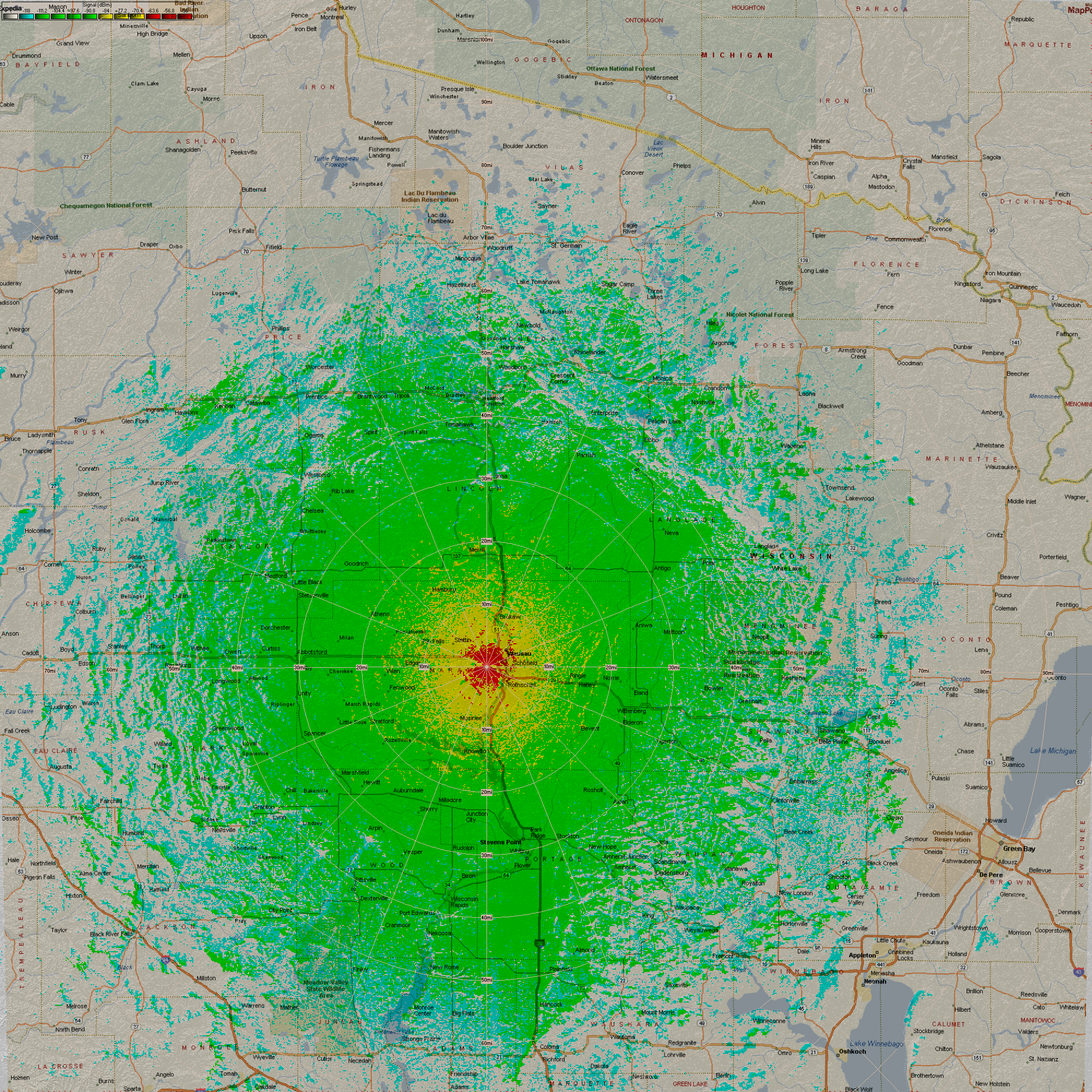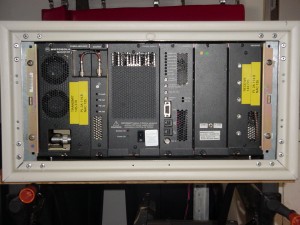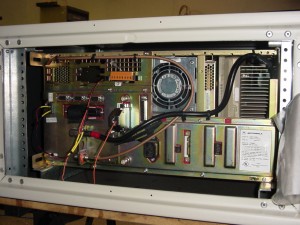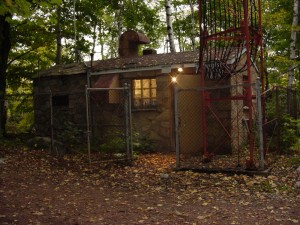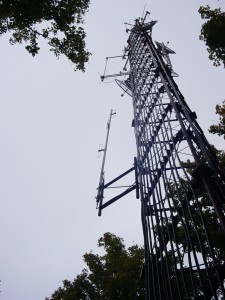145.370 repeater
NAC 135
PL 114.8 (2A)
Wisconsin’s First Amateur P25 Digital Repeater
last update 03/03/2009
This repeater is a collaborative effort between Jason Rasmussen KB9KST, Mark Rasmussen N9MEA, Marathon County, and the WVRA and is Wisconsin’s first amateur APCO25 (P25) Digital repeater. This is not the same as D-Star. P25 digital (also referred to as IMBE) is the US standard for digital communications for commercial and public safety. D-Star is the Japanese standard for Amateur radio. Unlike the D-Star repeaters, the P25 repeaters can also pass analog traffic just like our normal repeaters. Just remember to use PL 114.8, like the other club repeaters. If you use this repeater in it’s analog form, you should monitor in carrier squelch so that you don’t transmit over the top of someone using the digital format. If you are using this repeater in the digital scheme, use NAC code (similar to PL but only digital) 135. If you do use this repeater in the digital mode, please program your radios for mixed mode receive, that way you will hear either the digital or analog traffic. This repeater is still a 600khz offset.
Check out this link to Wikipedia for P25 information.
Check out this link to Wikipedia for D Star information.
This repeater is located on the Marathon County tower on Rib Mountain. The antenna, a Celwave PD340, is located at 50ft up on the tower and is hooked up to 1/2″ hardline and run into the building. The hardline is connected to a Sinclair duplexer. The repeater is a Motorola Quantar running 100 watts. Having the repeater at this site allows us to have generator back up power.
The second P25 Digital repeater in the state has gone on the air in Milwaukee. This is the 443.325 repeater and runs analog with a PL of 127.3 and a digital NAC code of 293.
9/6/07 – Re-installed the repeater after having it down for about the last week. There were a couple of changes made to the repeater. The first is that the PL (CTCSS) during the hang time of the repeater is stripped off. PL tone is only transmitted when there is an active signal into the receiver. This is just like the rest of the WVRA repeaters. There was also a programming change made to enable text messaging between user radios through the repeater.
1/24/08 – Was looking at the Quantar software and the file for this repeater and noticed that it had the wrong call sign programmed in the repeater. It was programmed with WC9AHB instead of WC9ABH. Went to the site and reprogrammed the repeater with the correct call sign. Had to jump the fence because the lock on the gate was froze. Quite a site to see I imagine, climbing the fence with a laptop and programming cable in hand.
1/25/08 – Lost power to most of Rib Mountain including the county tower that this repeater is located at. The generator ran perfect and we had no loss of service on this repeater.
2/7/08 – Reprogrammed the repeater for the correct callsign – WC9ABH.
10/2/08 – Reprogrammed the call on the repeater from WC9ABH to KB9KST. You may be asking yourself, why? The FCC is no longer renewing RACES callsigns, which the WC9ABH was. The license actually expired in July, but the Emergency Management office didn’t notify us until earlier this week.
Here are some pictures of the repeater, duplexer, antenna, and equipment building.
APCO25 digital radios are manufactured by many different radio company’s such as MA/COM (was GE), Motorola, Relm (Bendix King), Kenwood and many others. There is lots of this equipment for sale on ebay.
Project 25 (P25) is a standard for the manufacturing of interoperable digital two-way wireless communications products. Developed in North America under state, local and federal representatives and Telecommunications Industry Association (TIA) governance, P25 is gaining worldwide acceptance for public safety, security, public service, and commercial applications. The published P25 standards suite is administered by the Telecommunications Industry Association (TIA Mobile and Personal Private Radio Standards Committee TR-8). Radio equipment that demonstrates compliance with P25 is able to meet a set of minimum requirements to fit the needs of public safety. These include the ability to interoperate with other P25 equipment, so that users on different systems can talk via direct radio contact.
The P25 standard was created by and for public safety professionals.
From the beginning, P25 has targeted four primary objectives:
- Allow effective, efficient, and reliable intra-agency and inter-agency communications… so organizations can easily implement interoperable and seamless joint communication in both routine and emergency circumstances.
- Ensure competition in system life cycle procurements… so agencies can choose from multiple vendors and products, ultimately saving money and gaining the freedom to select from the widest range of equipment and features.
- Provide user-friendly equipment… so users can take full advantage of their radios’ lifesaving capabilities on the job – even under adverse conditions – with minimal training.
- Improve radio spectrum efficiency… so networks will have enough capacity to handle calls and allow room for growth, even in areas where the spectrum is crowded and it’s difficult for agencies to obtain licenses for additional radio frequencies.
P25 systems are available today and being deployed globally. Many organizations have mandated that new land mobile radio system purchases follow P25 standards. P25 is ongoing. The standard continues to evolve as the needs of users and the capabilities of new technology advance. Both users and manufacturers have an important role to play in shaping P25.
At a minimum, a P25 radio system must provide interoperability with these mandatory P25 Standard components:
- The Common Air Interface (CAI) specifies how information is coded, transmitted and received over the air.It enables users to interoperate and communicate digitally across networks, agencies, and vendors.
- The Improved Multi-Band Excitation (IMBE) vocoder converts speech into a digital bit stream.Test panels judged IMBE as the coding scheme most successful at making male and female voices audible against background noises such as moving vehicles, sirens, gunshots, and traffic noise – the conditions of public safety use.
P25 has also defined standard modes of operation to enable multi-vendor interoperability for additional system functions: trunking, encryption, over-the-air rekeying, to name a few.
A set of defined system interfaces allow the P25 system elements to communicate with host computers, data terminals and the public switched telephone network (PSTN).
There are two phases of P25 development:
- Phase 1 is completed.It specifies a 12.5 kHz bandwidth.
- Phase 2 is in development.It will use a 6.25 kHz equivalent bandwidth to allow better spectrum efficiency and benefit a greater number of users.


